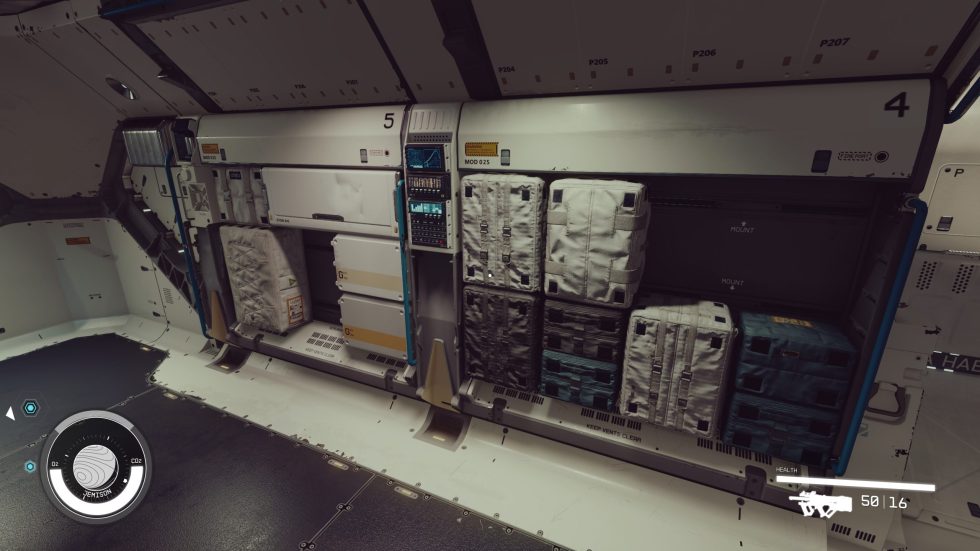The colleagues from WCCFTECH have once again dedicated themselves to Starfield. NVIDIA’s DLSS 3.5 technology, known for its ability to improve image quality and frame rates, is now available for Starfield on the PC. However, not officially and only thanks to the efforts of external modders, since the studio, for whatever reason (we won’t discuss it here now), resisted the implementation of NVIDIA’s technology. After the release of mods for NVIDIA DLSS 2 and Intel XeSS plugins by PureDark, the now also support for DLSS 3.5 was integrated into the game by third parties rather promptly.
This development offers quite visible advantages, of course only for owners of NVIDIA graphics cards. DLSS 3.5 technology has now been seamlessly integrated into the game and offers a remarkable visual improvement, thanks in part to its advanced AI model that subjectively improves image quality beyond native resolutions, delivering sharper and more vivid images. Amazing, but you can really see it.
You could previously see how NVIDIA’s DLSS 2 could significantly improve image quality in Starfield on the PC. Now there’s an additional option to consider along with AMD’s FSR 2, which is the only officially integrated upscaling solution in the game aside from CAS. Enabling DLSS 3.5 in Starfield only requires a straightforward process, which MxBenchmarkPC has described in the essential steps in a video (there’s also a block of text about it in the description below the video):
Finally, how does the whole thing look in a direct comparison? First again as a video, but there are also screenshots, don’t worry.
It’s important to realize that DLSS 3.5 offers a wide range of features, with the new AI upscaling model being just one of them. This technology also supports image generation and ray reconstruction, the latter of which requires adjustments on the engine side to fully utilize. When evaluating image quality, a series of screenshots were compiled showing the differences between Native, FSR 2 (100%), DLSS 3.5 (Performance) and DLSS 3.5 (Quality) modes. It is worth noting that AMD’s FSR 2 effectively improves image quality compared to native resolution, but DLSS 3.5 shows slightly superior performance in this regard.
Screenshots #1 (Native):

Screenshot #1 (FSR 2 100%):

Screenshot #1 (DLSS 3.5 P):

Screenshot #1 DLSS 3.5 Q):

In the initial set of screenshots, it was clear that DLSS 3.5 quality mode offered the best overall image quality, followed closely by FSR 2. DLSS performance mode offered image quality on par with native resolution, but remarkably without the visible visual flicker that was present in FSR 2 and native rendering modes.
Screenshots #2 (Native):

Screenshot #2 (FSR 2 100%):

Screenshot #2 (DLSS 3.5 P):

Screenshot #2 DLSS 3.5 Q):

Looking at the interior of the ship’s main cockpit, it is clear that the displays and menus are noticeably sharper and easier to read compared to the native display. In addition, there is a noticeable improvement in the visual quality of the distant buildings.
Screenshots #3 (Native):

Screenshot #3 (FSR 2 100%):

Screenshot #3 (DLSS 3.5 P):

Screenshot #3 DLSS 3.5 Q):

When evaluating the quality of objects and materials, both DLSS 3.5 and FSR 2 seem to provide better results. It is also worth noting that the ground on the quality presets provides a more visually appealing appearance compared to the native rendering.
Screenshots #4 (Native):

Screenshot #4 (FSR 2 100%):

Screenshot #4 (DLSS 3.5 P):

Screenshot #4 DLSS 3.5 Q):

In conclusion, the outer appearance of the spaceship is once again quite visually impressive, thanks to the application of DLSS 3.5 and FSR 2 upscaling technologies. The performance mode offers improved performance, while the visual quality is about the same as the native resolution. From a personal point of view, it is recommended to choose the FSR 2 and DLSS 3.5 quality settings unless you are using older hardware, in which case the performance modes might be better suited to maintain a playable frame rate.
Source: WccfTech
































115 Antworten
Kommentar
Lade neue Kommentare
Mitglied
Veteran
1
Urgestein
1
Urgestein
1
Urgestein
Urgestein
Veteran
Veteran
Veteran
Urgestein
Urgestein
Urgestein
1
Neuling
Urgestein
Urgestein
Alle Kommentare lesen unter igor´sLAB Community →